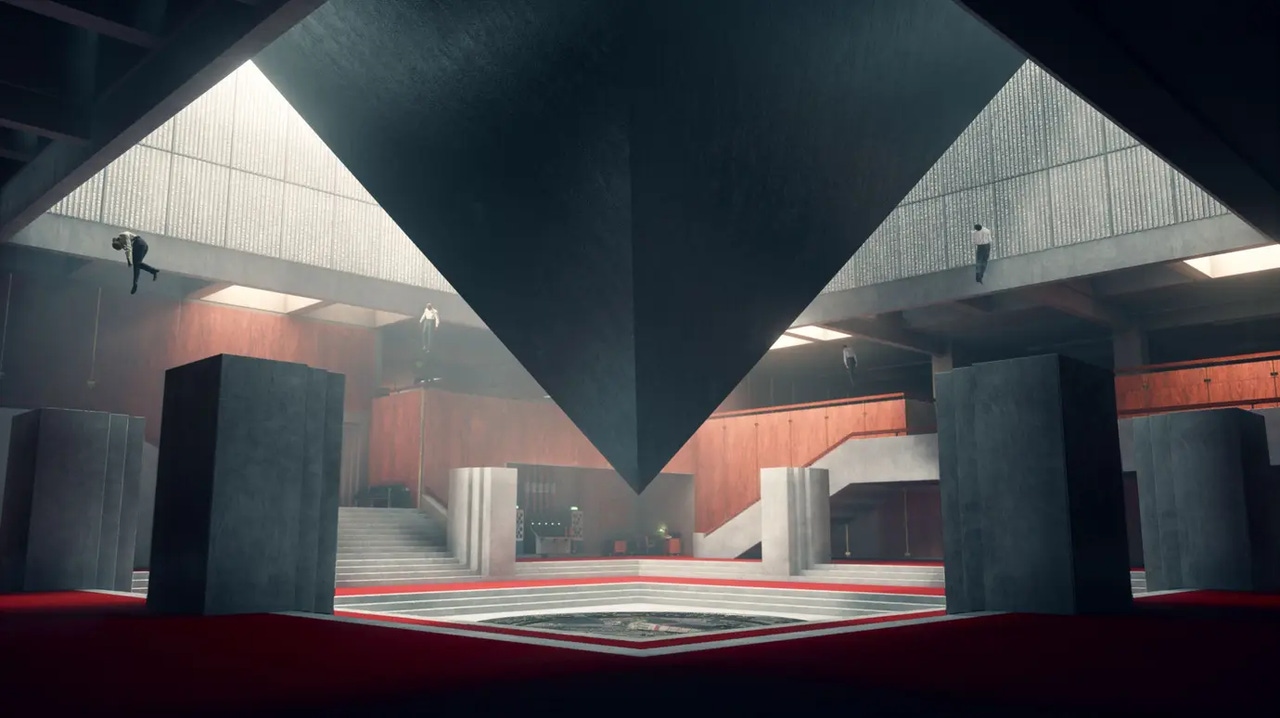Trending
Opinion: How will Project 2025 impact game developers?
The Heritage Foundation's manifesto for the possible next administration could do great harm to many, including large portions of the game development community.
Explaining how Control's procedural destruction system was developed during a GDC Summer talk, Remedy's principle VFX artist Johannes Richter said the process began with understanding 'granularity.'

Control, the latest supernatural jaunt from Remedy, takes place in shifting brutalist structure called The Oldest House. It's an imposing, cinematic, and impossibly beautiful skyscraper filled with secrets, and wandering its ancient halls is probably the second best thing about the otherworldly shooter. The first is how you can blow everything inside those concrete corridors to smithereens.
As anybody who's played the game will know, the destruction system in Control is a delight. Objects cascade around rooms and splinter into fragments as players blitz through levels with the finesse of a radioactive sledgehammer, painting a canvas of chaos that Jackson Pollock would be proud of.
Explaining how that procedural destruction system was developed and implemented during a talk at GDC Summer, Remedy's principle VFX artist Johannes Richter said the process began with understanding 'granularity.'
That principle of granularity revolves around the concept of recreating every level of natural detail in each visual effect. That might sound overwhelming, but it's a fairly common principle in the VFX industry -- especially in film -- and asks VFX artists to do their best to capture the continuum of nature.
"You try and capture nature because nature isn't quantified. Nature is sort of a continuum from very big objects down to dust and very thin veils of smoke. And you always want to encapsulate that to create this rich gradient across all those different scales," explains Richter.
"If you look at how to do that in a game engine, we're looking at an overlapping representation three different layers. And the first one is you can do rigid body simulations (RBDs). You have chunks and parts of props and environments. All of that is RBDs. And the environments are a big static mesh that you can collide with.
"Then you've got to start representing them with something else because the smaller you get, the more of them you'll have on screen. So now we're looking at something like mesh particles or rigid body hierarchies or material decals even. Those can sell a certain material richness on those layers. So now we're moving from objects to chunks, and almost to the debris already.
"The last layer is pure particles. Particle sprites, mesh particles for embers, sparks, smoke, fire, splinters, gravel, sand, and all that kind of stuff that plays a big role in filling out that kind of gradient."
.png/?width=700&auto=webp&quality=80&disable=upscale)
That's the process, but why use a procedural approach to implement it? According to Richter, the VFX team on Control was restricted by its size. That meant they couldn't start working on hundreds of assets and props individually. What they could do, however, is assign those objects with rules and metadata that would dictate how they behave.
"We had to choose a certain approach to this and we went procedural, but what does 'procedural' mean? It's a rule-based processing and interpretation of world data. That's really all it is. You get some data and you have some rules, then you apply the rules and change the data. That's sort of the key to this," he explains.
"What that looked like for us, for this kind of environment process, was we got the art models and the world and used them as our data. Then the data was actually amended or augmented with a bit of extra stuff, extra metadata that basically told us what everything is made of.
"So we could say 'Hey, those cushions are fabric. That concrete is, well, concrete, and the plant is made out of plant. Once you know that about an object, you can start applying rules based on what those objects are made of. So you could say 'well, grass spawns bits of leaves when you shoot it. Or concrete breaks into smaller concrete bits when you shoot it and then spawns dust. Shoot a metal pipe and it spawns water that dribbles out of the hole, and then you add a bend decal to sell a little bit of deformation up there.'"
In short, the Remedy VFX team created a finite set of rules that encapsulated the whole process, and ensured every object -- be it a wooden chair, plant, computer, or concrete pillar -- had a material-driven reaction to whatever could happen inside the world of Control.
Richter concedes that it wasn't the easiest system to create, but once the VFX team got over that initial hurdle they had something they could unleash on a swathe unique objects and props as they came through the pipe.
You May Also Like